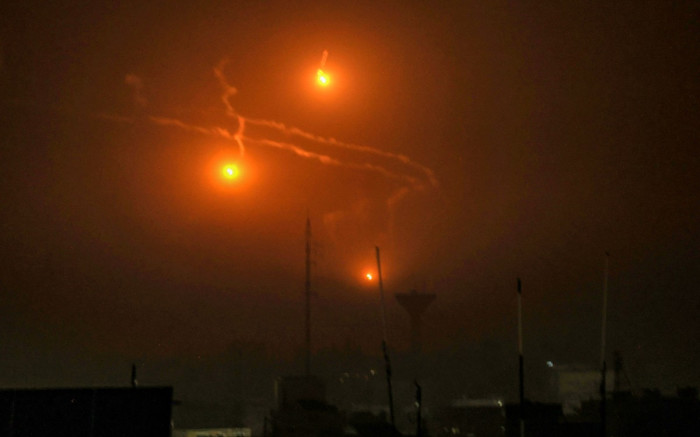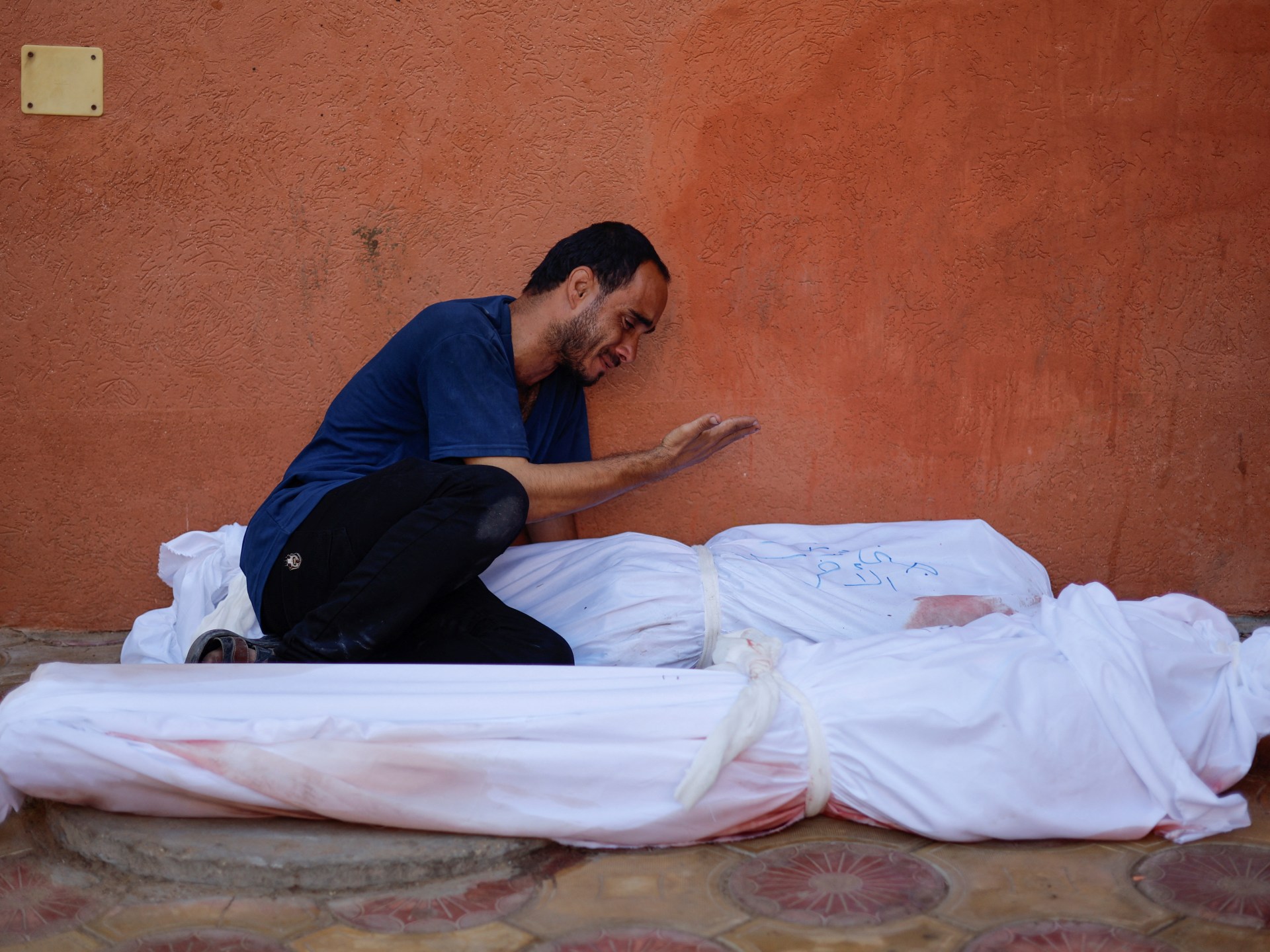
Israel initially focused its offensive on the north of the territory, but the army is now dropping leaflets in parts of the south, urging Palestinian civilians there to flee to other areas.
An image taken from Rafah in the southern Gaza Strip shows flares dropped during the Israeli bombardment on December 4, 2023, amid ongoing fighting between Israel and the Palestinian militant group Hamas. Image: AFP
UNDEFINED – Israeli troops battled Hamas militants in the southern Gaza Strip on Tuesday after extending their offensive deeper into the besieged area, with warnings that an “even more hellish scenario” was unfolding for trapped civilians.
Israel initially focused its offensive on the north of the territory, but the army is now dropping leaflets in parts of the south, urging Palestinian civilians there to flee to other areas.
Israeli tanks, armored personnel carriers and bulldozers were spotted on Monday near the southern Gaza town of Khan Yunis, which is full of civilians who fled their homes further north in the territory early in the war, witnesses told AFP.
The army said on Monday it was taking “aggressive action” against “Hamas and other terrorist organizations” in Khan Yunis, warning that the main road to the north and east of the city represented “a battlefield.”
Hamas claimed via Telegram that its militants attacked two personnel carriers and a tank near Khan Yunis.
Rocket volleys were fired again from Gaza into Israeli territory.
As the war spreads, international aid organizations warn that civilians in the densely populated area are running out of options to escape.
“Nowhere in Gaza is safe and there is nowhere left to go,” said Lynn Hastings, U.N. humanitarian coordinator in the Palestinian territories.
“If possible, an even more hellish scenario is looming that humanitarian operations may not be able to respond to,” Hastings said in a statement.
According to Israeli authorities, Israel declared war on Hamas after the militant group killed 1,200 people, mostly civilians, and took around 240 hostages on October 7.
In retaliation for the worst attack in its history, Israel has vowed to root out Hamas and secure the release of all hostages held in Gaza.
The Hamas-run health ministry in Gaza says the war has killed nearly 15,900 people in the territory, about 70% of them women and children.
“LIKE AN EARTHQUAKE”
In the town of Rafah, near the Egyptian border, resident Abu Jahar al-Hajj said an airstrike near his home felt “like an earthquake.”
“Pieces of concrete fell on us,” he said.
In Deir al-Balah, further north, Walaa Abu Libda found shelter in a hospital but said her four-year-old daughter remained trapped under rubble.
“I don’t know if she’s dead or alive,” said Libda, one of an estimated 1.8 million displaced people in Gaza – about three-quarters of the population, according to the UN.
The Israeli army on Tuesday denied telling the World Health Organization (WHO) that it should empty an aid camp in southern Gaza within 24 hours before ground operations in the area render it unusable.
On Monday, WHO chief Tedros Adhanom Ghebreyesus wrote on
Key ally the United States has warned Israel to do more to prevent civilian casualties as operations shift south.
Israel said on Monday it does not want to force Palestinian civilians to leave their homes permanently, but is instead seeking assistance from aid agencies to improve infrastructure in a tiny coastal area in the Gaza Strip called Al-Mawasi.
“We have asked civilians to evacuate the battlefield and we have established a designated humanitarian zone within the Gaza Strip,” Israeli military spokesman Jonathan Conricus said.
Speaking on condition of anonymity, senior Israeli military officials admitted that for every dead Hamas fighter in the Gaza Strip, about two civilians were killed.
“Hopefully [the ratio] “We will be much lower in the coming phase of the war,” one of the officials added.
To that end, officials said, the army is using high-tech mapping software to track population movements in the Gaza Strip and issue evacuation orders.
The system incorporates cell phone and other signals, aerial surveillance and news from local sources, as well as AI to create a constantly updated map showing population concentrations across the area.
However, the UN humanitarian office OCHA has questioned the usefulness of such a tool in an area where access to telecommunications and electricity is sporadic.
According to the Palestinian telecommunications company Paltel, all mobile and telephone services were interrupted throughout the Gaza Strip on Monday “due to the disruption of the main fiber optic routes on the Israeli side.”
On Tuesday, global network monitor Netblocks confirmed that Gazans were experiencing “a complete communications blackout.”
‘UNBEARABLE’
The latest fighting followed the collapse of a Qatari-brokered ceasefire last Friday in which scores of Israeli and other hostages were released in exchange for Palestinian prisoners.
The Israeli military says at least 137 hostages are still being held in Gaza, but Hamas has ruled out further releases until a permanent ceasefire is agreed.
With several women still among the hostages, US State Department spokesman Matthew Miller said one of the reasons the ceasefire failed could be that Hamas did not want them to “talk about what happened to them during what happened during their time in captivity”.
Israeli police have been investigating evidence of sexual violence against women during the October 7 attacks.
A senior police official recently told the Israeli parliament that an investigation had collected more than 1,500 witness statements. The allegations include gang rape and autopsy.
The war has raised fears of a wider regional conflict, with frequent exchanges of fire with Iran-backed Hezbollah across Israel’s border with Lebanon.
On Tuesday, the Israeli military said its warplanes had attacked Hezbollah positions in Lebanon in response to takeoffs from Lebanon to Israel on Monday.
There has also been an increase in violence in the Israeli-occupied West Bank. According to Palestinian authorities, more than 250 Palestinians have been killed there since the war began.






Recent Comments